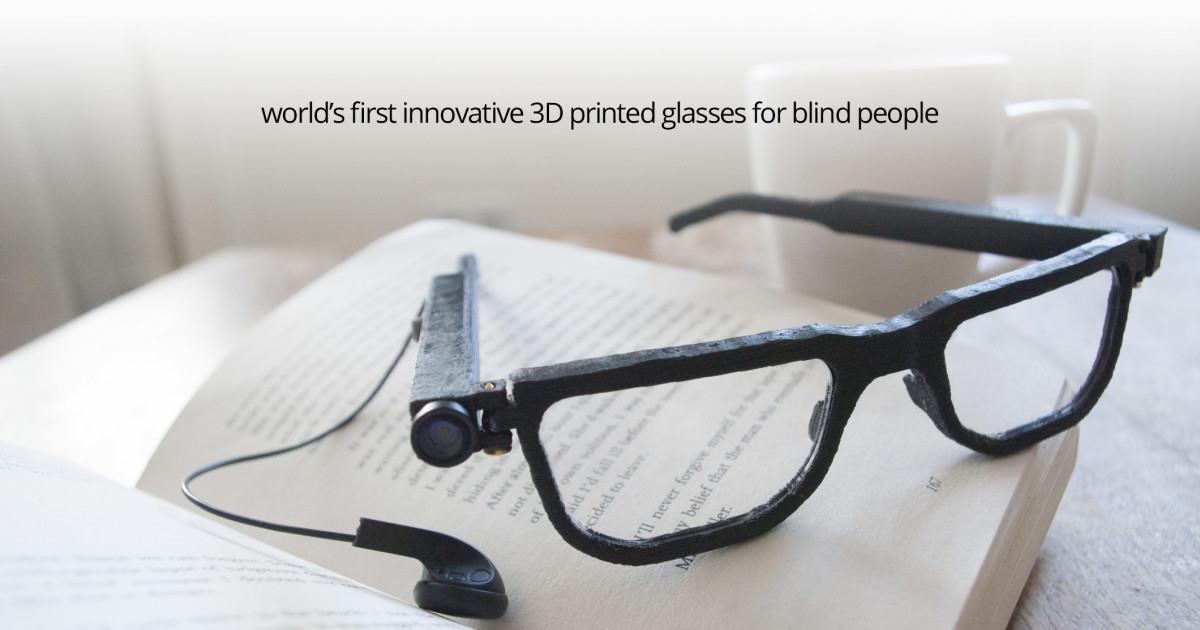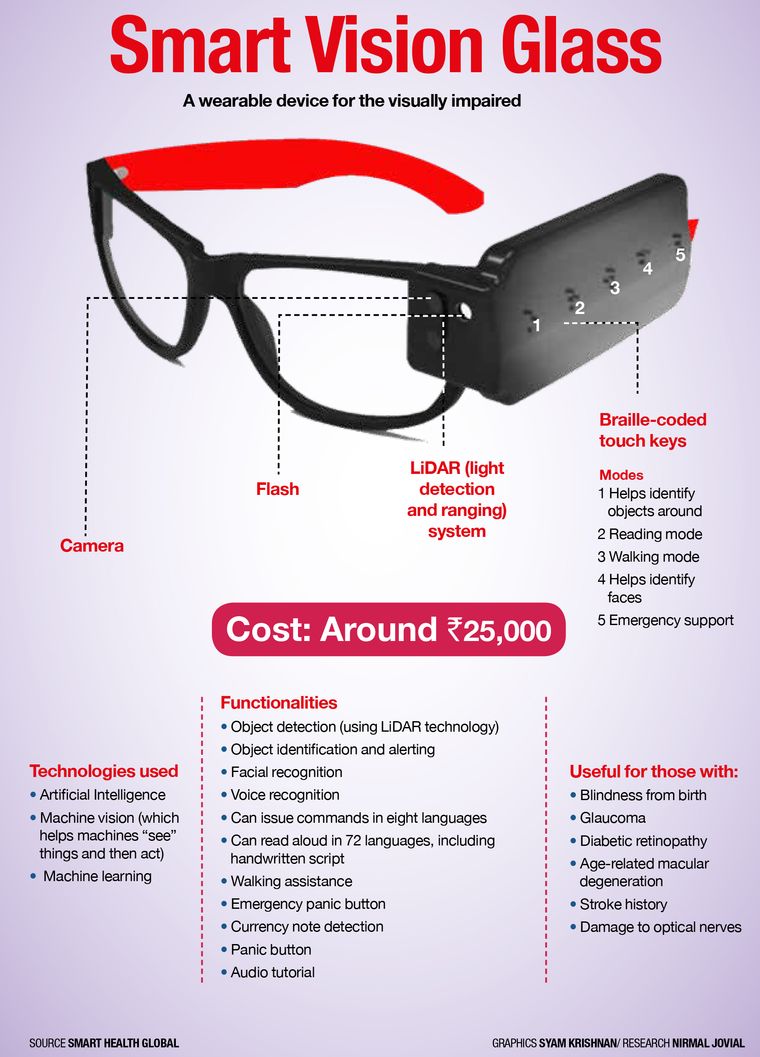Innovative Solutions in Assistive Modern Technology for Visual Disability
The landscape of assistive technology for visual disability is developing swiftly, presenting a series of ingenious solutions that improve ease of access and freedom. From advanced smart device applications that promote navigating to wearable tools created for real-time support, these tools are improving the experiences of those with visual problems. The combination of smart home technologies and instructional sources has the potential to promote better area involvement. Nonetheless, the ramifications of these improvements elevate essential concerns about their accessibility and effectiveness in diverse contexts, calling for a better examination of their wider influence.
Developments in Smart Device Applications
Over the last few years, advancements in smart device applications have actually significantly transformed the landscape of assistive innovation for individuals with aesthetic impairments. These applications utilize the effective sensors and abilities of contemporary smart devices to provide individuals with devices that improve independence and accessibility in their every day lives.
Significant amongst these technologies are applications created for things recognition, which use the smartphone's video camera to identify items and supply spoken summaries. Such functions equip individuals to navigate their settings better, whether identifying items in stores or finding individual valuables at home. In addition, text-to-speech applications have enhanced significantly, allowing users to catch published text through their device's camera and get instant audio comments, therefore promoting analysis and comprehension.
Navigation applications customized for aesthetically damaged individuals have actually additionally emerged, providing auditory assistance and thorough place info. These tools offer important support for flexibility, enabling customers to traverse unfamiliar spaces with confidence. Community-driven applications have promoted social interaction and resource sharing among individuals with aesthetic impairments, developing an encouraging network that boosts their high quality of life. On the whole, mobile phone applications have ended up being important allies in promoting freedom and availability for individuals with visual disabilities.
Wearable Devices for Navigating
Wearable devices for navigation have actually become a groundbreaking solution for people with visual problems, providing hands-free support that enhances flexibility and alignment. These gadgets typically use advanced modern technologies, including GPS, ultrasonic sensing units, and fabricated knowledge, to offer real-time feedback and instructions to customers as they browse their setting.
One significant example of wearable navigation innovation is smart glasses, which can find barriers and relay auditory or haptic feedback to the user, permitting for risk-free and efficient motion in various settings. Other devices, such as vests and belts geared up with sensors, can in a similar way inform customers of their surroundings by offering alerts about nearby things or changes in terrain.
Additionally, many wearable gadgets integrate with smart device applications, allowing customers to tailor their navigation preferences and get tailored route suggestions. This customization can substantially improve the user experience, empowering individuals to travel with greater confidence and self-reliance.
As innovation proceeds to develop, the capacity for wearable navigation tools to enhance the top quality of life for people with aesthetic impairments stays substantial, leading the way for even more available and comprehensive environments.
Smart Home Technology Combination

Moreover, smart appliances geared up with responsive user interfaces or acoustic comments give intuitive communications that provide particularly to the requirements of those with visual impairments. Smart fridges can reveal their components and expiration days, while smart ovens can direct individuals through the food preparation procedure with audio directions.
Home automation systems, such as wise buzzers and safety electronic cameras, use comfort by enabling individuals to obtain informs and gain access to live feeds through their mobile tools, enhancing individual pink eye treatment safety and security (AI-powered visual aids). In addition, assimilation with mobile phones and tablet computers ensures that individuals can manage their home setting from anywhere within their premises
As smart home innovation continues to evolve, it holds the prospective to change the living experiences of people with aesthetic disabilities, cultivating independence and improving top quality of life in an increasingly linked globe.

Educational Equipment and Resources
Access to reliable academic devices and sources is vital for people with aesthetic impairments, as it encourages them to engage completely in their discovering experiences. Different assistive modern technologies have been created to enhance accessibility and foster independent understanding.
Additionally, instructional software specifically made for visually impaired individuals provides attributes such as high-contrast modes and adjustable text dimensions. These devices fit varied discovering styles and make certain that students can customize their instructional experience to their needs.
Moreover, accessibility to digital libraries and audio books increases the array of readily available knowing products, allowing trainees to explore subjects detailed without the restrictions imposed by traditional print sources. Collaborative systems that integrate availability features additionally help with group tasks, guaranteeing that visually damaged students can add meaningfully along with their peers.
Community Assistance and Engagement
A robust network of community assistance and engagement is essential for individuals with visual disabilities, fostering an inclusive environment where they can thrive. Community organizations, regional advocacy teams, and volunteers play a crucial duty in offering sources, information, and companionship, which are crucial for enhancing the quality of life for those affected by visual impairments.
Engagement tasks such as workshops, social occasions, and assistance eye exam near me groups not just promote ability development but likewise advertise social interaction, decreasing sensations of isolation. These initiatives urge people to share experiences, obstacles, and successes, consequently reinforcing community bonds. Furthermore, collaborations with neighborhood businesses can bring about greater access in public rooms, additionally incorporating people with visual problems right into the area.
Technology likewise improves neighborhood engagement via on the internet systems that offer digital support teams and sources, allowing individuals to attach no matter geographical obstacles. By harnessing both in-person and digital remedies, neighborhoods can develop a comprehensive support network. Inevitably, promoting cooperation amongst different stakeholders-- consisting of family members, instructors, and health care experts-- guarantees that people with visual impairments get the all natural support necessary to navigate day-to-day live successfully and with self-respect.
Final Thought
Innovative services in assistive technology for aesthetic disability dramatically improve the high quality of life for people facing these difficulties. The integration of smart device applications, wearable gadgets, smart home innovation, and academic devices cultivates higher self-reliance and accessibility.
The landscape of assistive technology for aesthetic problems is progressing quickly, presenting a variety of innovative options that boost availability and self-reliance. Community-driven applications have fostered social interaction and resource sharing among people with aesthetic disabilities, creating a supportive network that enhances their high quality of life. Overall, smart device applications have actually become indispensable allies in promoting autonomy and availability for individuals with aesthetic disabilities.
Lots of individuals with visual problems are finding higher autonomy with the assimilation of clever home technology.Cutting-edge solutions in assistive technology for aesthetic disability substantially boost the top quality of life for people facing these challenges.